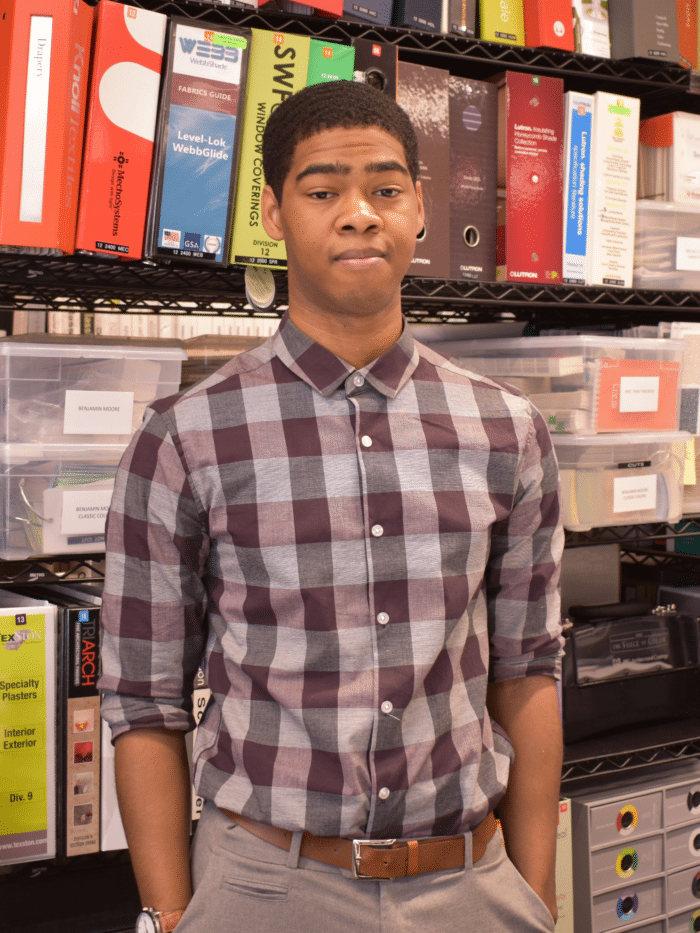Summer Intern Series: Bryan Asson
For the past 18 years, David M. Schwarz Architects has maintained a travel fellowship program which offers undergraduate and graduate architecture students an opportunity to travel and intern in our office. Bryan Asson is the 2018 Summer Fellow from University of Maryland (UMD) School of Architecture, Planning and Preservation and will be receiving his Master of Architecture degree from UMD in 2019. Keep reading to learn more about Bryan Asson and his plans to travel to Japan.

What is the most surprising thing about DC? It’s a lot denser population-wise than I imagined it would be. It’s also more expensive than I thought it would be.
What music are you currently listening to? Alternative rock or indie pop. Arctic Monkeys, Tegan and Sara.
Favorite book: A Storm of Swords by George RR Martin. It’s one of the Game of Thrones books.
Favorite app: Instagram
Favorite ice cream flavor: I don’t like ice cream; I’m more of a mango sherbet guy.
What was your favorite band ten years ago? The Black Eyed Peas
What are you currently working on?
I’m working on Dickies Arena. It’s a big project. It’s got a lot more detail than any project I’ve ever worked on. I’m currently working on some of the furniture.
What is something you have done during your time at DMSAS that you had never done or tried before?
I think the design work at this kind of specificity. Usually interns from my experience work on construction drawings and they don’t get to do any of the design work, so coming here and getting to do design and then getting that input early on is different, working from top-down rather than bottom-up.
What is your favorite DMSAS project? Is there is another project (past or present) that you wish you could have worked on?
I don’t know yet. Working on the arena is fun. They have multiple sections and it’s multi-purpose, where it has to be able to accommodate different types of people. The idea of a cyclical user-interface where people are living in the building and then potentially work in the building and eat, and then go back up to their house without ever having to leave—it’s kind of self-sufficient.
Why do you study architecture?
I was good at drawing and my parents thought that there are starving artists, but not starving architects. And then I figured out there are starving architects too.
If you weren’t studying architecture, what would you be doing?
Art. I draw for my hobby any time I can.
Why did you choose your particular destination(s)?
Japan: probably Tokyo. I’m not exactly sure what I’m doing but for now I’m thinking of going to an older area and then seeing the comparison to a newer area in Tokyo. My thesis is on Metabolism. It’s a type of architecture that links early Japan with post-WWII Japan, so I’m looking at some of the buildings that were built during the Metabolist period [1960s to present] and applying that to my thesis.
The Metabolist movement was a group of architects that came out of CIAM (Congres Internationaux d’Architecture Moderne) in the 1960s and they used an infrastructure to place modules onto. They made a core which would have things like an elevator shaft and lobby space, and they would place these pre-fabricated residential modules on to create a new building type. It’s during the time of Archigram, which produced the Walking City, so they were trying to create new, innovative ways to spread and to grow. They also did the Tokyo Bay plan, where they extended the city onto the Tokyo Bay, trying to create new concepts for how to grow a city.
How are you preparing for the trip: language lessons, planning an itinerary; researching the architecture, local customs, etc.?
I haven’t yet. But I have to look up books and see how I’m getting there, if I’m taking a tour. I want to see the Nakagin Capsule Tower, which is a Metabolist structure, and some of the older pagodas and such.
Once you arrive, what are you most looking forward to?
Probably the culture shock. I don’t travel very often so I’m trying to see how different the West and East are in general.
Other than drawing, what techniques do you most enjoy using to document architecture?
Just experiencing them, walking through, trying to see the path that the architect wanted you to see—trying to position myself where I can see the pathways that they wanted you to experience and how they accomplished that.
